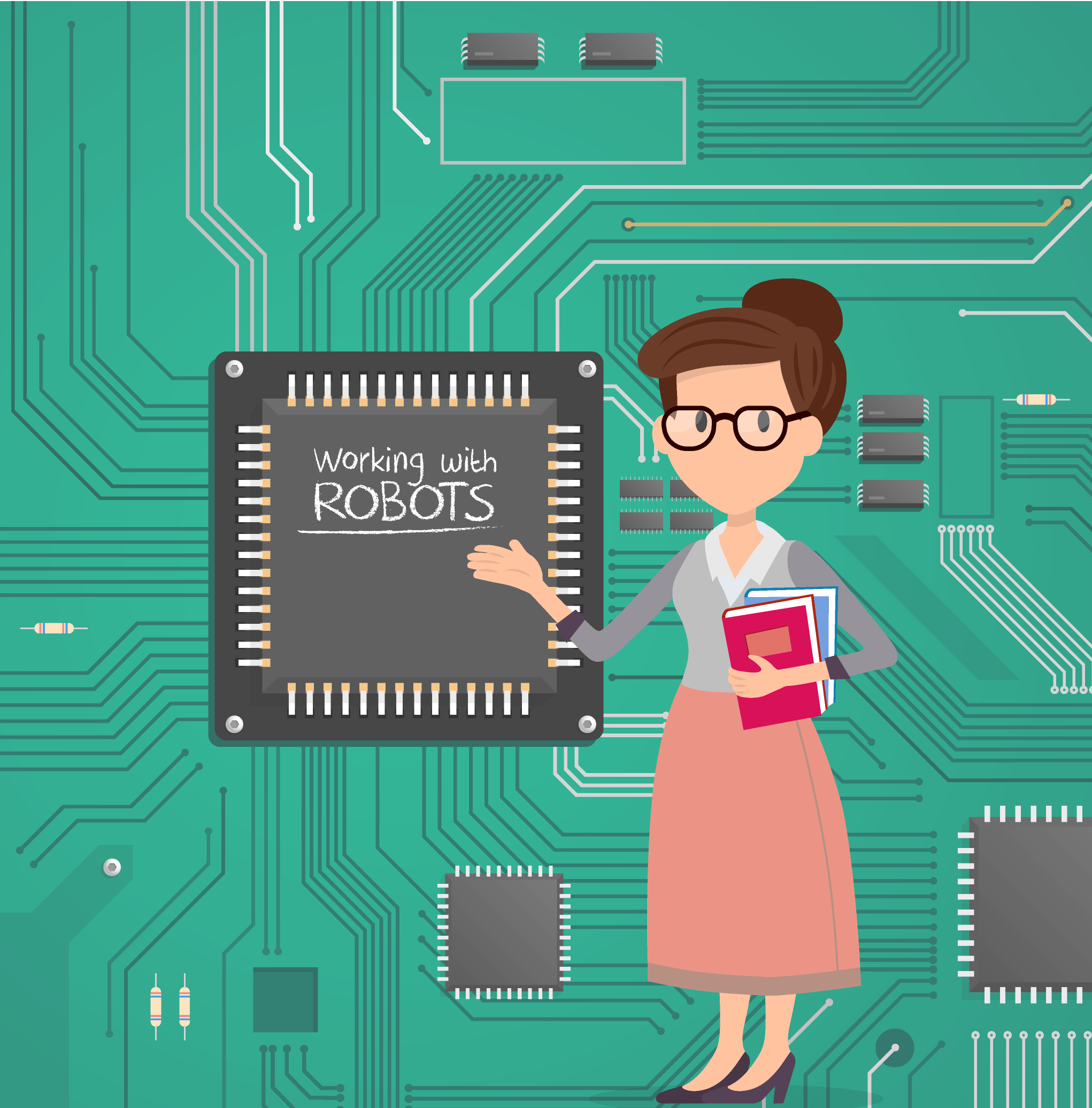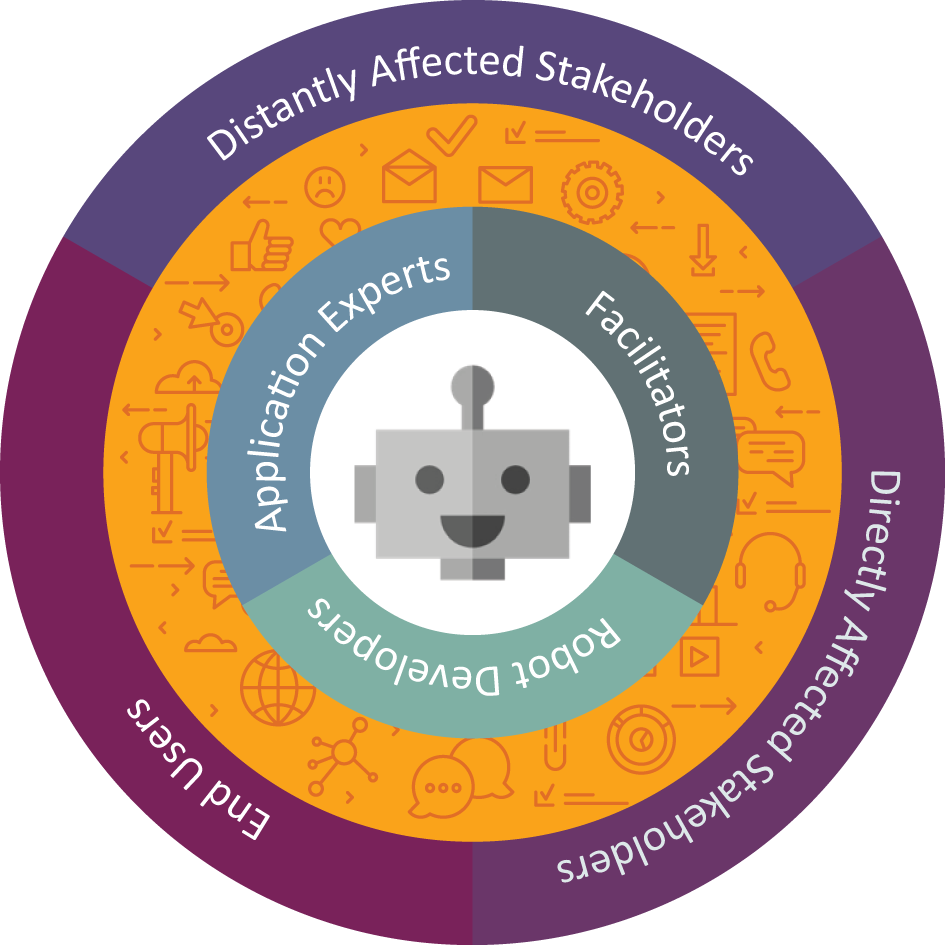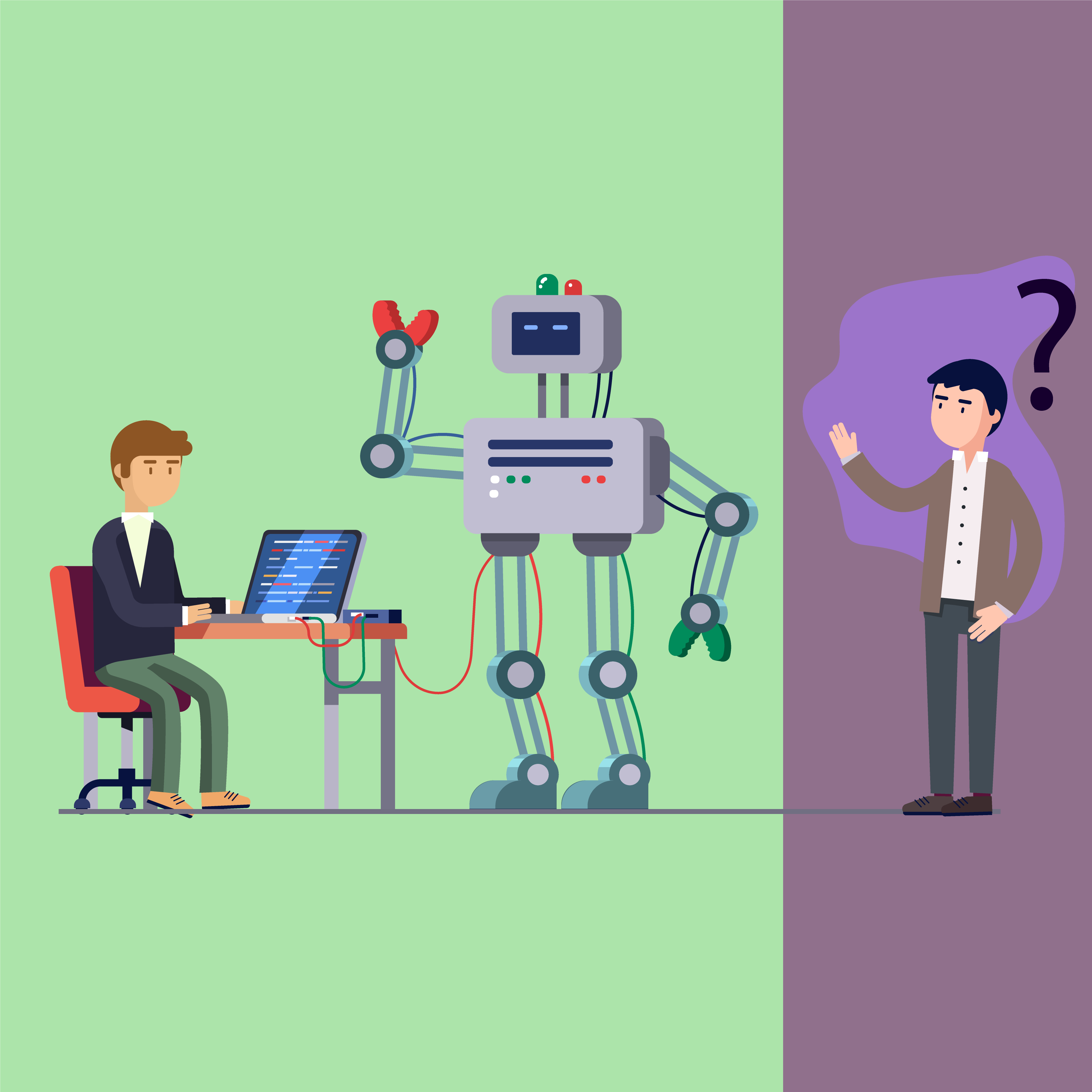Learning in Practice
How does the ongoing learning process around robots works?

Whenever robots are implemented, a learning process begins and continues on an everyday basis. Even for robot developers, learning is an ongoing process.
However, the relation between what the robot can do by itself, peoples’ knowledge of robots, their educational background, and the situated learning taking place when robots are implemented are at present not well understood.


Human Proximity Model
Robots can be more or less intuitive, but situated learning will always be an issue when new technologies are implemented.
Knowledge
Information about robots affects acceptance, and information about humans affects design and implementation. Knowledge is an accumulation of ideas about the world that a person forms through transformative experiences engaging with the world.
Acquired knowledge, or lack of knowledge, shapes a person's perceptions of robots and can affect how robots are designed, how they are regulated, and how they are taken up or resisted.

When a new robot is introduced technological apprehension may limit the user’s ability or willingness to engage with the robot. Enabling users to observe a robot in use can provide the users with situated knowledge that may alleviate some of their initial apprehension toward robots. It is also here that robot developers stand to gain from engaging with everyday workers who have a situated knowledge about what works in manual processes.
When the user experiences the robot as a threat, for example to their wages or their identity, technology resistance may pop up. Technology resistance differs from technology apprehension because it is based on real learning experiences rather than imaginaries. Left unaddressed, this resistance may even lead to non-use, misuse, or sabotage.
Learning
Learning is the process of organizing knowledge and know-how in recognizable patterns. Learning creates expectations, habits, meaningful perceptions, and the emotions that arise when what we expected happens or changes. Whenever a new technology is put to use, a new learning process is initiated that teaches us about how the technology fits (or does not fit) with our daily routines.
There are four particularly relevant areas of learning occurring in robotics between humans and machines:
- Users learning to adapt to robots, to meet the demands that technology places on the human.
- Developers learning about their robots as a technology-in-use, situated in a context with actual users.
- Users and developers learning what is important to each other and aligning motives to work toward a common goal.
- Workers "learning to learn" in order to remain relevant in an increasingly automated world.
The first two points are addressed here, the third in under Collaboration in the Inner Circle, and the fourth in the section on education.
Expand the tabs below to know more.
Users must learn how to operate or interact with the robot. Depending on the type of robot and application sector, the need for training of staff before or during implementation varies. However, the more we move into industrial areas and bigger industries the more we find that employers recognize the need for official training.
Whether learning to adapt one’s own conduct or lifestyle, the surrounding environment and physical setup for the robot, or learning to adapt the robot itself, the users’ learning goes far beyond an orientation to operating the robot.
Developers must learn about their robots as technologies-in-use, they must learn to see the robot as situated in a particular application context among particular users. Engagements with users and the robot situated in an actual or potential implementation site can open for learning about users, and what matters to them.
Feedback from users, with experiences of the robot in their own everyday lives, is important to all design phases and for all robot types.
Education
Increased robotization and automation place new demands on education. Education may be an answer to new demands on society (e.g., unemployment, deskilling), to train the workforce to contend with robotization and to train engineers to incorporate ethical thinking and practices in design processes.
Expand the tabs below to learn more.
Education to become an engineer is global, and practical, often involving early contact with companies. Sometimes engineers have learned something about ethics, but ethics is mostly considered a topic to be dealt with separately from engineering.
With automation, not only is a principal activity lost (driving, e.g.), but there is a ripple effect through the supply chains and related markets (e.g., manufacturers of parts, oil and gas industry, parking lots). When workers are not displaced, their work environments, workflows, and requisite expertise are nonetheless changed.
These changes require reskilling and/or entirely new educations, whether to fit the new demands in an existing job, or to meet the requirements for a new job. Formal education provides the social infrastructure and systematization necessary for a mass reskilling of the population.
As work changes rapidly, workers require reskilling to remain relevant in the workforce. Thus, automation is changing the nature of work and the worker. Both roboticists and affected stakeholders feel it is absolutely necessary for the worker to change and adapt in order to stay relevant.
We have identified two cross-cases issues tied to education and reskilling of the workforce as robots and AI increasingly changes what is meant by work: One is the reskilling and education to continuously create and maintain and operate new technologies such as robots. The other issue is how to educate humans to do things that are not connected to AI and robotics – but are tasks best performed by humans.
Giving Voice
Click on to listen to the Affected Stakeholder. You can expand the content to full screen by clicking on the bottom right corner.
- Knowledge: A corpus of ideas about the world that is codified for communication through social relations.
- Naïve User: A term used by robot makers (and computer scientists) to refer to persons unfamiliar or inexperienced with robots (or other digital technologies).
- Technology Aprehension: An initial reluctance to use a new technology, tied to a lack of experience or lack or information.
- Technology Resistance: Opposition to an implemented technology, whether by passive non-use, active misuse, or deliberate sabotage.
- Learning: The process of developing organization of knowledge and know-how through engagement with the social and material world.
- Technology in Use: An understanding of a technology not as a static object, but as a thing defined and redefined by its context of use.
- Education: The social infrastructure and systemization of learning organized knowledge.
Key Concepts
Reflection Points
- What does it take for making a robot intuitive for a user?
- To what extent is it possible to learn about technology-in-use??
- How can knowledge about robots alleviate fears?
- How does your learning of how technology works differ from the situated users?
Concluding Remarks on Learning in Practice
Whenever a robot is implemented in a practice, a learning process is initiated, whether connected to an explicit training or not. Robots can be more or less intuitive, but situated learning will always be an issue when new technologies are implemented. To create intuitive robots, the robot developers need to learn from users what matters to them, and they need to be aware that not all users share their own intuitive mindset for the way a robot is best operated. Though it is a difficult task, there is a lot to be gained from following technology-in-use in an everyday practice, and not just in laboratories.
If you found this interesting, read more here:
Click here to Download Chapter 7: Learning in Practice
Download
If you enjoyed reading about Learning in Practice, you may also like:
By going over each icon with the mouse you will get a brief description of the corresponding topic.